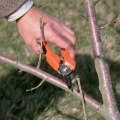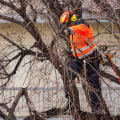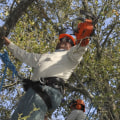Several factors can contribute to a tree becoming unhealthy, encompassing both environmental conditions and biotic stressors. At the foundation, soil quality and proper irrigation play crucial roles in a tree's health. Soil that lacks essential nutrients or is either too compacted for roots to grow or too loose to retain moisture can significantly impair a tree's growth and vitality. Likewise, incorrect watering practices, such as under-watering or over-watering, can lead to stress that makes trees susceptible to disease and pest infestation. Environmental stressors, including drought, excessive heat, pollution, and exposure to harmful chemicals, can weaken a tree's natural defense mechanisms, leaving it vulnerable to attack.
Physical damage to a tree, whether from construction, lawn equipment, or severe weather events, can cause injuries that are gateways for pathogens and pests. Improper pruning or care that damages a tree’s bark, limbs, or root system can also leave lasting detrimental effects, compromising the tree's structural integrity and its ability to transport nutrients effectively. Furthermore, the presence of pests and diseases is a direct indicator of an unhealthy tree. Pests such as borers, aphids, and scale insects can wreak havoc on a tree's health by feeding on its sap, leaves, and bark, thereby weakening the tree and making it more susceptible to other health issues.
Fungal diseases, including root rot, cankers, and powdery mildew, as well as viral and bacterial infections, can lead to severe health problems for trees, manifesting as discolored foliage, stunted growth, and, in extreme cases, death. These pathogens attack the tree's critical systems, impairing its ability to function and grow. The impact of these diseases is often exacerbated by environmental conditions such as high humidity or prolonged wetness, which create ideal conditions for their proliferation.
Moreover, competition for light, water, and nutrients from surrounding vegetation can further stress a tree, especially if it is already weakened by other factors. Trees in overly crowded environments may struggle to access the resources they need to maintain healthy growth and resist pests and diseases. This competition can be particularly detrimental in managed landscapes where trees are not naturally spaced as they would be in a forest setting.
Addressing these challenges often requires a targeted approach, including interventions from tree care professionals and, when necessary, pest control experts. In regions like Airdrie, where specific pests can pose significant threats to tree health, the expertise of Airdrie pest control services becomes indispensable. These professionals offer specialized knowledge and treatments to manage pest infestations effectively, helping to restore and maintain tree health. Their interventions can be crucial for controlling pests that are difficult to manage with general care practices, thereby playing a vital role in the overall strategy to keep trees healthy.





